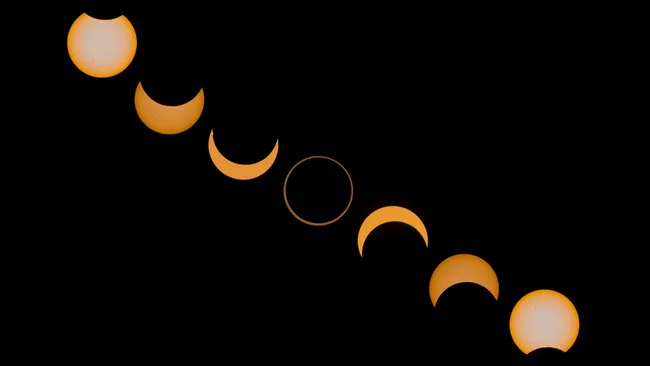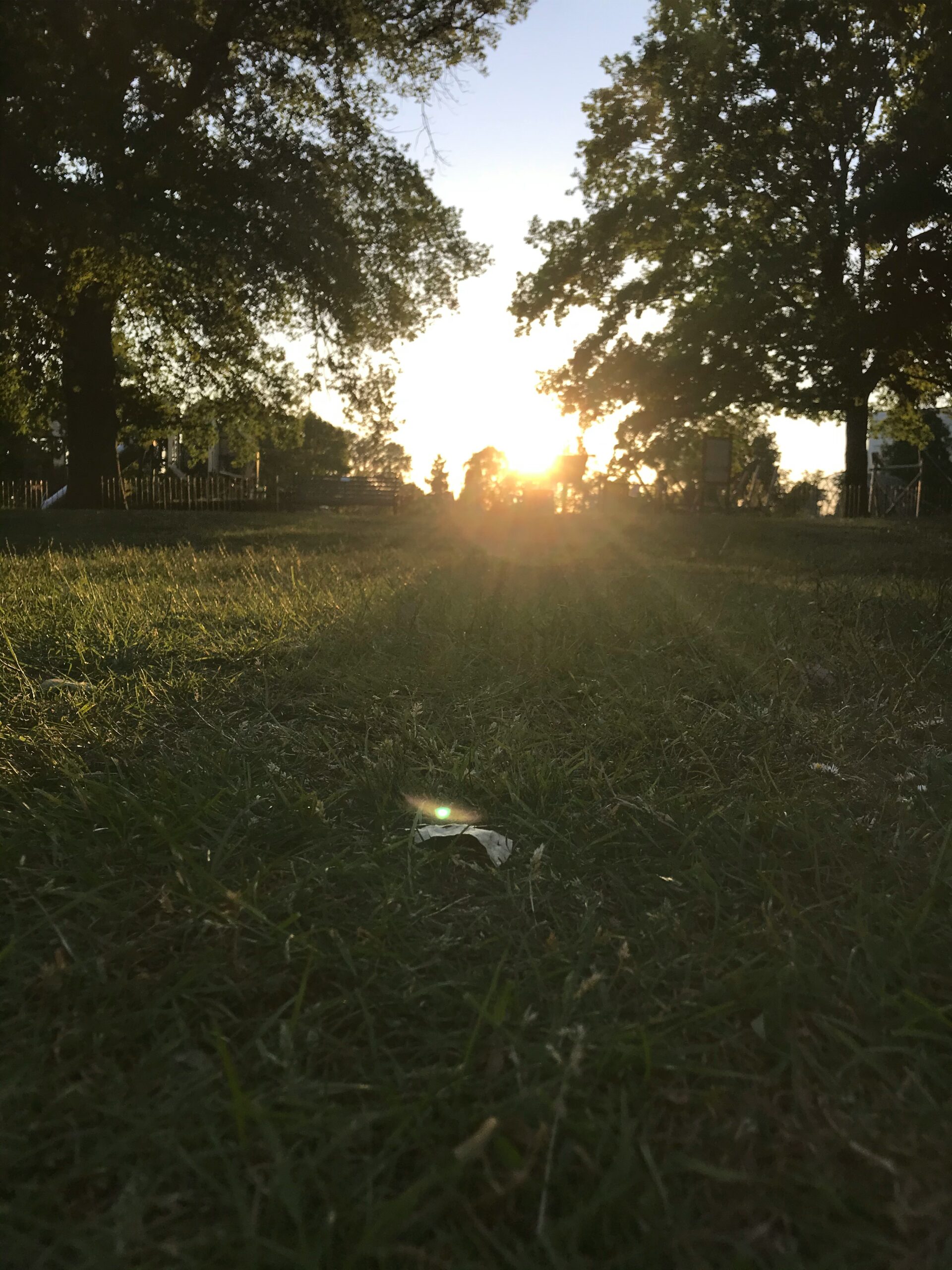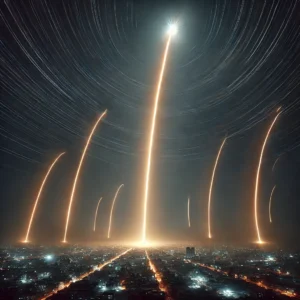Annular Solar Eclipse: Everything You Need to Know
An annular solar eclipse occurs when the moon passes directly in front of the sun but is too far from Earth to completely cover the sun’s disk.

A "ring of fire" will be seen in the Pacific Ocean and South America on Oct. 2. (Image credit: twildlife via Getty Images)
Skywatchers will be treated to a spectacular annular solar eclipse on October 2, with its path spanning parts of the Pacific Ocean, southern Chile, and southern Argentina. Known as the “ring of fire” eclipse, the celestial event is set to provide breathtaking views, particularly for those located within the path of annularity.
What is an Annular Solar Eclipse?
An annular solar eclipse occurs when the moon passes directly in front of the sun but is too far from Earth to completely cover the sun’s disk. The distance creates a visible ring of sunlight around the moon, producing the famous “ring of fire” effect.
The moon’s apparent size is smaller, so instead of a total blackout, a bright, fiery ring remains visible around the moon’s shadow.
How is an Annular Eclipse Different from a Total Solar Eclipse?
The moon during the total solar eclipse is close enough to Earth to cover the entire sun, resulting in complete darkness for a brief period.
However, during an annular eclipse, because the moon is farther away, it leaves a portion of the sun exposed, forming a ring of light.
Totality in a total solar eclipse offers a momentary night-like darkness, while an annular eclipse allows observers to witness the sun’s outer edge shining brightly around the moon throughout the event.
Path of the Eclipse
On October 2, the path of the annular eclipse will begin in the Pacific Ocean and move across southern Chile and southern Argentina. Outside of this path, viewers will experience a partial solar eclipse, where only part of the sun will be covered by the moon.
The best viewing locations for the full “ring of fire” effect will be within a narrow path, typically about 200-300 kilometers wide, known as the path of annularity.
Observers within this region will witness the moon obscuring 93% of the sun’s surface. The eclipse will be visible for approximately 7 minutes and 25 seconds at its maximum point over the Pacific Ocean, making it one of the longest annular eclipses in recent years.
Timetable of the Eclipse
- Start of Partial Eclipse: The partial eclipse, where the moon begins to cover the sun, will start in the morning hours, local time, depending on the observer’s location.
- Annularity: The moment when the moon is fully positioned in front of the sun will occur later in the day, with annularity lasting for several minutes depending on where the observer is located along the eclipse path.
- End of Eclipse: As the moon continues its orbit, the eclipse will end in the late afternoon in Argentina.
Safety Tips for Viewing the Eclipse
One critical aspect of viewing any solar eclipse is ensuring that proper eye protection is used. Looking directly at the sun during any phase of an annular eclipse, including annularity, can cause permanent eye damage.
Special solar viewing glasses or eclipse viewers are essential. Standard sunglasses, even dark ones, do not provide adequate protection.
Alternatively, observers can use indirect viewing methods, such as pinhole projectors, to safely watch the eclipse without looking directly at the sun.
Where to Watch
Those in southern Chile and southern Argentina will have the best views of the annular eclipse.
Some parts of the Pacific Ocean will also experience the full “ring of fire” effect, though this will be visible only from remote locations.
People in surrounding areas will witness a partial eclipse, where the moon covers part of the sun but not enough to create the ring.
For those unable to travel to the path of annularity, several live streams and astronomical organizations will broadcast the event online, offering virtual views of the eclipse from the best locations.
Why October 2, 2024, is Special
The October 2024 annular eclipse is part of the Saros 144 cycle, a recurring cycle of solar eclipses that occur approximately every 18 years.
The eclipse will be the 44th in the series, with previous eclipses in the cycle having occurred in different parts of the world.
It will be followed by a total solar eclipse on April 8, 2024, making 2024 a particularly exciting year for eclipse chasers.
Additionally, because of the long duration of the eclipse—up to 7 minutes and 25 seconds—this annular eclipse offers a rare opportunity for prolonged observation, making it a must-see event for astronomy enthusiasts.
What Causes an Annular Solar Eclipse?
Solar eclipses occur due to the alignment of the Earth, moon, and sun. When the moon is directly between the Earth and the sun, it blocks out the sun’s light from reaching Earth.
However, the distance between the Earth and moon varies slightly due to the moon’s elliptical orbit.
During an annular eclipse, the moon is at or near its farthest point from Earth (known as apogee), which makes it appear smaller in the sky and unable to completely cover the sun, hence the visible ring of light.
Cultural Significance of Eclipses
Throughout history, eclipses have held great cultural and religious significance across different civilizations. Solar eclipses, in particular, were often viewed as omens or messages from the gods.
While modern science has explained the mechanics of eclipses, they continue to captivate people worldwide, offering a chance to reflect on the beauty and mystery of the cosmos.
Conclusion
The October 2, 2024, annular solar eclipse will be an extraordinary event, offering a “ring of fire” spectacle for those in the right locations.
Whether you’re an avid astronomer or a casual observer, the opportunity to witness this celestial wonder should not be missed.
Just remember to prioritize eye safety and make plans to catch the eclipse either in person or through virtual broadcasts.








